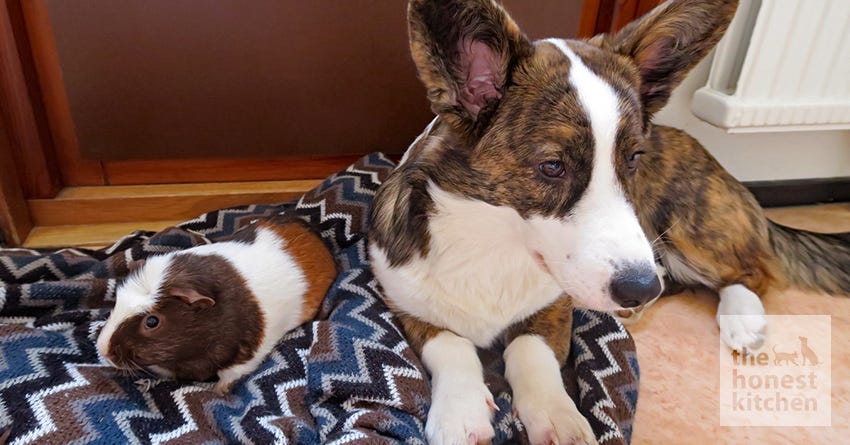Introducing Your Puppy to Unusual Household Pets

Dogs and cats are by far the most popular pets.
There are many households that include more than one dog or cat, or even both dogs and cats. As a result, there is a lot of information on introducing a new puppy to your old dog, or introducing a dog and cat. But what if your household includes different, more unusual, pets? Guinea pigs, hamsters, mice, rats, and other rodents are common pets. So are rabbits and ferrets. Many people own birds. Turtles and tortoises, lizards, and snakes are also common pets. Should you even consider having a dog with other pets like this in your household? The short answer is "yes." Dogs are generally pretty affable creatures, and they get along with almost anyone and anything. However, as with most things with a new puppy, things will go much more smoothly if you put a little thought and planning into the situation beforehand.
Younger is better.
Generally speaking, it's easier to introduce a puppy instead of an adult dog to a home with other pets. This may seem counter-intuitive since adult dogs are generally better behaved. But there are several advantages with a puppy. For one, when a new pup is introduced to your household, his pack mentality will likely consider every living creature there as part of his pack. Not only are humans his pack, but so is your canary or guinea pig. Plus, since he's the new kid on the block, his pack mentality will tell him to defer to all his other pack members. There's also less chance the puppy will have had a bad experience with another animal of the same or similar type, so he'll be more open to presuming the new animal is a friend.
Give some thought to the breed.
Although with patience, time, and training you can teach your puppy to befriend any and all of your other pets, give your dog's breed some thought. Dogs that were originally bred as hunting dogs might not be the best breeds to keep around your birds. Terriers and other breeds that were bred to chase rats might not be the best breed to choose in a home with hamsters or guinea pigs. On the other hand, you want to be careful bringing home a Chihuahua puppy if you have a boa constrictor. Getting your dog to trust and accept another animal can be a time-consuming effort. The task is much more difficult if one animal by their nature considers the other a mortal enemy or prey.

istpckphoto/kall1st0
Introduce them gradually, in a controlled setting, and make it pleasant.
The introduction should be made very gradually. If the existing household pet is in a room with a door, particularly if it's a room the puppy doesn't have to enter, close the door to that room and let the puppy get used to the unusual scent coming from that room first. After a few days, when the puppy is accustomed to the scent, you can open the door to the room. Make sure the other animal is in its enclosed habitat, and have the puppy on a short leash. Your puppy will pick up on your mood, so be as relaxed and calm as possible. Let the puppy sniff the area around the enclosure, but don't encourage a face-to-face meeting with the other animal. Have lots of treats for both your puppy and your other pet (if that pet responds to treats), and treat them both for acceptable behavior. If the other animal shows signs of aggression or fear, move the puppy farther and farther away from the enclosure until your other pet calms down some. Keep your puppy from batting the cage with his paws or butting it with his head. If he is barking, quiet him or remove him: his barking may unsettle your other pet. Don't allow your puppy to lick the other pet: it can be harmful to the other pet or your pup. Strive for having your pets accept each other. If you want your pets to be friends, introduce them to each other calmly and gradually. Have one human in charge of each pet at all times so you can keep both pets out of harm. Also, make sure you give your original pet as much attention as you always did. Puppies with their big, bright, eyes, clumsy over-sized feet, and affectionate and endearing ways can demand much of our attention. You don't want your other pet to feel neglected.
Don't leave them unsupervised.
You should leave your pets safely restrained and in different rooms, if possible, when you aren't there to watch them. Even if the pets get along well, if a fun game gets too rough, it can have tragic consequences. Having more pets can enrich your life in more directions. With proper precautions and attention on your part, you and all your pets can enjoy being part of your diverse family.
